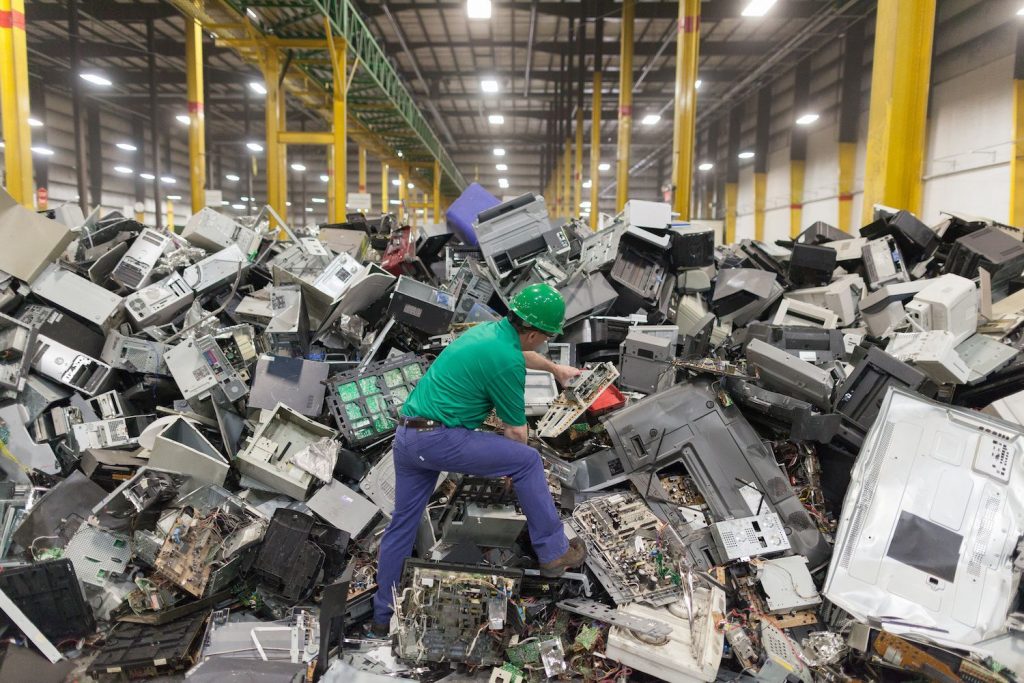Windows 10 Expiration Could Provoke Increase of E-Waste
 Microsoft aims to boost the PC market with artificial intelligence and Windows 11, but a collateral consequence of this could be a massive throw away of computers.
Microsoft aims to boost the PC market with artificial intelligence and Windows 11, but a collateral consequence of this could be a massive throw away of computers.
Approximately 20% of the global Windows installed base can’t upgrade its over 200 million devices to Win11 because of the TPM 2.0 chip, which contributes to Win11’s security.
Kieren Jessop and fellow analyst Ben Caddy released a report in December that estimated about a fifth of the world’s Windows 10 devices, some 240 million PCs will become e-waste by the time Microsoft ends support for Windows 10.
Most of these 240 million PCs, if in good condition, could at least be recycled. However, the report noted that their incompatibility with the latest supported version of Windows massively reduces their value for refurbishing and reselling.
Many of the 240 million PCs will still be usable for years to come, but demand for devices no longer supported by Microsoft will be minimal.
Although Microsoft is offering an Extended Security Updates program for three years after the Win10 end-of-service date, Caddy said the high price makes extending the life of Win10 PCs even more unappealing.
Companies prefer having their devices always provided with the latest security updates and features, so even if operational, older hardware is considered obsolete, experts say.
In addition, the personal computer fleets of many enterprises need to be renewed due to significant demand during the Covid epidemic.
That also will drive PC sales in the coming months. A Canalys survey of channel partners found that 73% of partners expect the Win10 EoS to impact their customers’ refresh plans in the next 12 months.
Even if Microsoft weren’t ending Win10 support, the rise of artificial intelligence is making Win10 hardware obsolete. If AI-driven applications and features become the norm, then older PCs will not be able to run them efficiently.
This will happen more and more often as more artificial intelligence functions are transferred from the cloud to devices. The ability of AI PCs to do on-device inferencing provides several advantages, including lower cost per query, reduced latency, unlimited personalization, improved availability — no internet connection required — and enhanced privacy and security.
However, Russ Ernst, CTO of Blancco Technology Group maintained that companies are trying to use their old equipment with more efficiency, not less. There’s a drive to move away from a strict three-year lifecycle and hold on to machines for four, five years or longer. Some OEMs, like HP, are starting to think of a seven-year lifecycle.
One way to extend the life of hardware is through “cascading,” which requires knowledge of the computing demands of the various units in the business. For example, you can’t cascade a machine from marketing to engineering as the system requirements are incompatible, but you can cascade a machine from engineering to marketing.
The scale of the e-waste produced by the end of support for Windows 10 highlights the role of device vendors and OS vendors alike in maximizing products’ usable lifespans.
To facilitate the circular economy, it added, OEMs must embed durability, repairability and recyclability into the design of their devices — and OS vendors must ensure these devices are usable and secure for as long as possible. The responsibility here should be shared among manufacturers, consumers, and policymakers.


Latest News